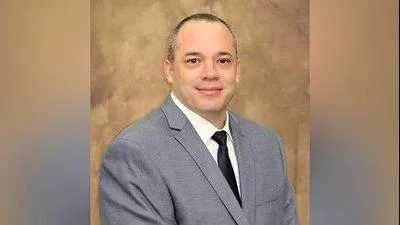One year after announcing a transformative gift by the Pat ’59, ’09 H (’97, ’00 P) and Shirley Ryan ’61, ’19 H (’97, ’00 P) Family to build a new Ryan Field, Northwestern University today released renderings of a schematic design for the new stadium to replace the current 97-year-old structure.
The new Ryan Field stadium campus will be funded entirely with private dollars — requiring no taxpayer financing — and will create a world-class home for Northwestern University Athletics. When complete, the new stadium will create a best-in-the-nation football experience for fans, student-athletes and the community.
Proposed design highlights include:
- A more intimate setting: Significantly smaller crowds — designed for a maximum capacity of 35,000, more than 12,000 fewer than the current Ryan Field, with a state-of-the-art canopy designed to focus noise and light on the field;
- New community assets: The new Ryan Field is being developed as a modern stadium campus with beautiful plazas, an exceptional new community park as well as other publicly accessible greenspaces for residents to enjoy year-round community activities;
- Accessibility: The new stadium will apply Universal Design standards and will set a new standard for accessibility and inclusivity, making it among the most accessible stadiums in the country; and
- Sustainability: The project is designed to achieve Gold LEED certification.
“We are extremely excited to move forward with a transformational stadium project and grateful to our University leadership and to the Board of Trustees for their decision to take the next steps toward a new Ryan Field,” said Dr. Derrick Gragg, Combe Family Vice President for Athletics and Recreation. “We are all grateful to the Ryan Family for their unwavering commitment to Northwestern University and our academic and athletics programs. I have no doubt that the privately funded stadium will be a gamechanger for our football program, athletics department and the community, and will be in line with our other excellent facilities including Welsh-Ryan Arena and Ryan Fieldhouse.”
The Ryan Family’s gift was the largest in Northwestern history, and included funding not only for the new stadium, but the largest academic gifts in the history of Northwestern to accelerate breakthroughs in biomedical, economics and business research. This generous gift, which the Ryan Family has now committed to increase, ensures the new Ryan Field and plazas will not come at the cost of research, scholarship, student aid, tuition or staff and faculty support.
“Our family’s commitment to athletics is much deeper than football. It’s about developing the body, mind and soul, which we experienced as undergraduates at Northwestern and have carried with us throughout our lives,” said Pat Ryan. “The new Ryan Field will be more than just an amazing home for Wildcat football. Our hope is that through this new stadium campus, Ryan Field is reimagined as an architecturally significant year-round gathering place for the Northwestern and Evanston communities that is accessible to all.”
Northwestern President Michael Schill called the plans for the new Ryan Field an important step for the University and the Evanston community.
“I am excited about this project, which will create a world-class new stadium that is befitting our world-class institution, our amazing student-athletes, our fans, our alumni and the Evanston community,” President Schill said. “I appreciate all the work my predecessor and the leadership team at the University have done to actively listen and solicit input from the community. I am looking forward to continuing that engagement and look forward to seeing this project come to fruition.”
Over the last year, Northwestern has been meeting with neighbors of the stadium, including formal sessions with the 7th Ward Working Group, led by Evanston Councilmember Eleanor Revelle, to understand concerns and prioritize community feedback on the design. Based on that feedback, the initial design concept includes:
- Plans to reduce vehicular traffic when the stadium is in use. Some concepts under consideration include:
- A complimentary bike valet program, to promote safe cycling while improving traffic flow and provide safe bike storage during game days;
- A capacity reduction of more than 12,000 fans;
- Initiating conversations with Metra, CTA and ride-sharing services to explore more efficient scheduling and availability on game days
- A modern design that will reduce noise and light pollution.
- Designing an underground loading and service dock, away from the sight lines of nearby residents and businesses.
- A year-round facility that will further promote community engagement and offer opportunities for Evanston and local non-profit organizations.
Preliminary market studies indicate that the current interest in concerts in the area could generate over $35 million in new tax revenue for the City of Evanston from Northwestern over the first decade of the new Ryan Field alone.
The new stadium project will create significant economic benefits for Evanston. During the construction phase, the project will generate more than $10 million in direct fees and more than $600 million in indirect economic development for the City of Evanston. It also will create more than 2,900 new jobs during the rebuild.
The University also is committed to creating economic opportunities for minority-owned, woman-owned, and local Evanston businesses. The target for total subcontracted spending with local, minority-owned, and women-owned businesses for the Ryan Field project is 35%, with priority given to businesses and individuals located in Evanston.
The University plans to share additional concepts with the larger community through a series of listening and learning sessions over the coming months before formally beginning the entitlement process with the City of Evanston. The University looks forward to having conversations about potential uses and programming opportunities associated with such an amazing facility.
The University is exploring all options to secure venues at which the Wildcats will play during construction. Residents can learn more about the project on the new Ryan Field website at rebuildryanfield.com.
Original source can be found here.





 Alerts Sign-up
Alerts Sign-up